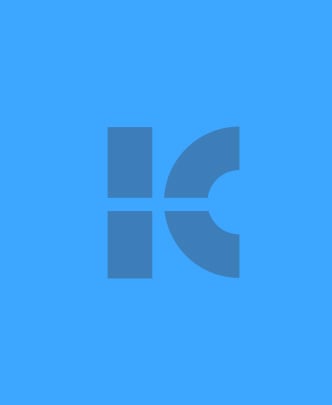
Why Smart Display Marketing is The Way of the Future



 Display marketing isn’t anything new. At this point, we’re all familiar with the ads we see (and sometimes adeptly ignore) around the web as we browse. But as long as Google—one of the biggest, smartest companies in the world—has an interest in display marketing, we can expect to see bold improvements in how it works. Their recent launch of smart display marketing both shows Google’s commitment to keeping display marketing relevant and speaks to some of the larger trends
Display marketing isn’t anything new. At this point, we’re all familiar with the ads we see (and sometimes adeptly ignore) around the web as we browse. But as long as Google—one of the biggest, smartest companies in the world—has an interest in display marketing, we can expect to see bold improvements in how it works. Their recent launch of smart display marketing both shows Google’s commitment to keeping display marketing relevant and speaks to some of the larger trends ![]() marketers can expect to see in coming years.
marketers can expect to see in coming years.
Smart display marketing has all the same components of regular display marketing, but with some of the work that previously fell to people now automated. Google combines the vast amounts of data it collects with machine learning technology to:
- Choose the best bid for your campaign within your budget, based on the target cost-per-acquisition (CPA) you’ve provided.
- Determine the best targeting options for each ad and campaign in terms of factors like audience, keywords, placements, interest categories and remarketing opportunities.
- Figure out the best creative combinations from the creative you’ve provided to display in each context. The program will test how people respond to different images paired with the different headlines, descriptions, logos, etc. and continually refine which creative messaging it uses for who based on what works.
In each case, Google uses the data they have on demographics, user behavior and the success of past ads to make the best choices for your bottom line. That data helps the system determine which ads and placements are competitive enough to be worth higher bids, and which aren’t worth the cost, saving you money while also achieving better results.
With machine learning, the algorithms used for smart display marketing will do just what the term says—learn. With every day (or every second, for that matter), the algorithm will get smarter at figuring out which ads to display where to get you higher conversions.
And Google’s not the only one getting in on this game. Facebook offers ad delivery optimization, which also uses data to determine the best targeting options likely to improve your results. And there are a few software solutions on the market that similarly use AI for ad buying across different channels. Like Google, they use technology to help you optimize your campaigns based on where the data says your audience is and which ads work best for them. With the help of AI, brands now have a number powerful options for getting more for their money from any ads placed around the web.
Why Smart Display Marketing Matters
To start, smart display marketing brings all the benefits that came with traditional display marketing, namely: wide reach, powerful targeting options and useful analytics. The Google Display Network includes over 3 million websites and apps, so you can easily reach your audience in places they hang out, and their targeting options help you make sure you’re specifically reaching members of your target audience at moments when your ad is most likely to be relevant to them.
While smart display marketing still provides users with powerful analytics you can use to better understand your audience and what works best with them, it goes one step further to interpret those analytics and make changes to how your campaign is run based on the results. Your budget goes that much further for your display campaigns and you end up with useful analytics you can apply to your other campaigns and overall strategy.
It Gets Results
Less work so rarely leads to better results in life, but brands that use smart display advertising are seeing proof of the difference it makes. Google says smart display campaigns see an average 20% increase in conversions in comparison to similar campaigns in the display network that don’t use the smart technology. And a couple of the early adopters they mention got even better results: Hulu and Credit Karma both saw a 37% increase in conversions.
It’s Part of Larger Trends
The Smart Display Network combines two big trends that are making waves in marketing and beyond:
- Marketing automation
- Artificial intelligence
Marketing automation has been allowing businesses to scale efforts while providing more personalized messaging to prospects at the same time with the help of data and technology.
It seems like every year, new products come out that allow marketers to automate tasks that used to be done manually. Every time that happens it creates room in the budget and schedule for other tasks. Your PPC specialists that save time and money by letting smart display marketing deal with placements and analyzing results can start devoting more time to developing the creative parts of the campaigns – still the most important part, and something humans will always do better than algorithms.
Artificial intelligence is influencing industries of all types and pretty much all the tech giants are investing in making their AI tech better and finding new ways to use it for a variety of challenges. Smart display marketing is only one of many ways Google is using AI. Most notably for marketers, it also drives Google’s Rankbrain, which plays a key role in determining which sites get ranked in the search engine.
In short, if you’re a marketer – even if you don’t work with display marketing – you should be thinking about AI and the way it’s reshaping how we work. And if your company uses display marketing now, consider making the move to smart display marketing. Why not start enjoying the benefits of higher conversions for less work?
How to Get Started With Smart Display Marketing On the Google Display Network
Unfortunately at this time, Google’s smart display marketing isn’t for everyone. But if you use AdWords now and have achieved either 50 conversions in the last 30 days on the display network or 100 conversions on the search network, then you’re eligible to start setting up smart display campaigns.
Setting up smart display campaigns isn’t all that different from setting up your other display campaigns. When you’re in your account and starting a new campaign, be sure to choose “Display Network Only,” then you’ll see the option to check “Create a Smart display campaign” on the next page.
Then like usual, set your target CPA and budget. Google recommends setting your daily budget at an amount at least 20 times your target CPA bid. Next, you’ll fill in all the creative portions of your ads:
- Your headlines
- Your descriptions
- Your logos
- Your images
You can probably pull these from other campaigns you’ve already created, and you’ll want to include several of each. The smart display network will test different combinations of these creative pieces, so make sure each one will work with all the others included. For example, if you have an ad where the headline and image are Valentine’s Day specific, but none of your other creative assets relate to the holiday, then they shouldn’t be included in the same campaign.
Once you’ve got your campaigns running, keep an eye on your performance report to see how well your ads are performing. While Google automates some of the work you used to do, you still need to watch out for ads that aren’t working and figure out when to switch out your creative assets or change your budget spend.
Other Options for Smart Display Marketing
If you’re not eligible to use Google’s smart display network, you still have options. You can use one of the software products that brings machine learning to the process of buying ads across the web. A few options include:
- Albert
- Magnetic
- Frank
- Datacritic
While these programs might not have access to as much data as Google does, in a way, they offer an advantage over Google’s smart display network since they tap into ad channels beyond those Google offers. You can bring a larger share of your online advertising into these to be managed by AI-fueled algorithms that help you achieve the best results based on your goals.
Smart Display Marketing Isn’t Enough
However you go about using smart display marketing, make sure you don’t let it overtake all your other marketing efforts. Smart display marketing is one good tool to have in your overall marketing toolkit, but on its own it won’t be enough.
What smart display marketing won’t change: ad blindness
People have gotten too good at ignoring ads they don’t care about. And a lot of them are blocking ads altogether. The average click-through-rates for online ads is .05%, so even improving the performance you have now may not mean a huge increase in leads or sales. That doesn’t mean smart display marketing isn’t worth using, just that it works best alongside other marketing tactics focused on helping you build a relationship with your customers.
Smart display marketing can help get people’s attention for the first time, or get them past the finish line when you use retargeting, but there’s still a need for all the nurturing that happens in between. For that, you need inbound marketing. When your display ads bring someone to your website for the first time, it’s your job to make sure they stick around and come back again. You can do that with high-quality content, persuasive calls-to-action, and appeals to sign up for your email list.
You can’t build customer relationships with smart display advertising, but you can strategically use it to get your website and content in front of the right people at the right time to help you get the ball rolling. And with retargeting, it can help you get back on the radar of past visitors who could use a reminder to come back around.
Smart display marketing is likely to become an important part of many marketing strategies, and we can expect some of the technologies it makes use of to pop up in other marketing tools and contexts in the years to come as well. Consider where it fits into your larger strategy and if it’s time to start using it.




